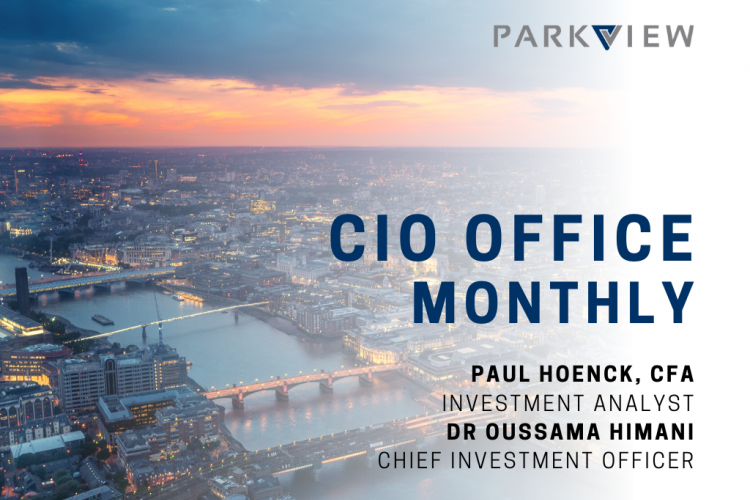CIO Office Market Update
The war in Ukraine continues, with little visibility on its likely duration and outcome. Economic policy uncertainties have started to decline, while uncertainty regarding economic outcomes has increased. It is now clear that sanctions imposed on Russia are unlikely to be reversed for the foreseeable future. Similarly, the damage to infrastructure in Ukraine makes it unlikely that the country’s export industries can resume operations even if the war were to end tomorrow.
Recent developments imply that the global economy needs to adjust to an outlook that includes, a diminished supply of key commodities, and the elimination of Russian demand for the exports of most major economies. The shock to global commodity supplies is happening at a time when supply chains have yet to recover from the Covid-related disruptions.
The US Federal Reserve, and other central banks, have little choice but to pursue monetary tightening, given the build-up of inflationary pressures over the past year. But by doing so, they are taking significant risk that they will tighten too far and too fast.
The Covid-induced recession introduced an unusual level of uncertainty into economic variables. Estimates of seasonal movements became unreliable, as were estimates of the productive capacity of the economy. Consequently, central banks found it hard to estimate the neutral rate of interest, namely the interest rate at which their policy will be neither stimulative nor contractionary. Indeed, the Federal Reserve took a pause from publishing its own estimates.
There are a number of Covid-related distortions that may dissipate. For example, the labour market appears very tight now. But the supply of labour could well increase with higher wages, as people who exited the labour force are lured back. The supply of labour could also increase later in the year, as people who moved away from large cities return. Under these circumstances, it should not be surprising that there can be large errors in estimating the neutral rate of interest.
It will be easy for central banks to raise rates too far in this environment. The impact of interest rate increases on overall economic activity will be magnified by the higher level of public sector indebtedness since Covid, as well as by the increase in mortgage rates. In the US, the mortgage rate has increased from less than 3% to 5% in the span of a few weeks. At the same time, higher prices of necessities squeeze discretionary spending.
An additional risk to the outlook emanates from China. It is now clear that China’s zero-Covid strategy has failed, as evidenced by the need for ongoing lockdowns. This magnifies the risks that the rest of the world are experiencing. Shut-downs will reduce aggregate demand – and hence dampen global growth. But they will also disrupt supply and can lead to increased costs in the rest of the world.
Against this background, one can only conclude that global economic growth will be meaningfully lower than foreseen only a few weeks ago. The outlook for different regions varies considerably. The US will fare better than Europe, given the latter’s higher exposure to Russian gas supplies, as well as the cost of supporting and accommodating large numbers of refugees. Commodity producers in emerging markets are well placed to benefit from benefit from improved terms of trade. Emerging markets that depend on imported energy, however, are already experiencing balance of payments pressure at a time when external borrowing costs are rising. A fifth of total emerging market debt is now trading at distressed levels.
We do not believe that a recession in the US and Europe is a foregone conclusion. But clearly the risk of such an outcome is increasing. As a result, we have adjusted our investment strategy to take a more defensive position in both equities and fixed income.
